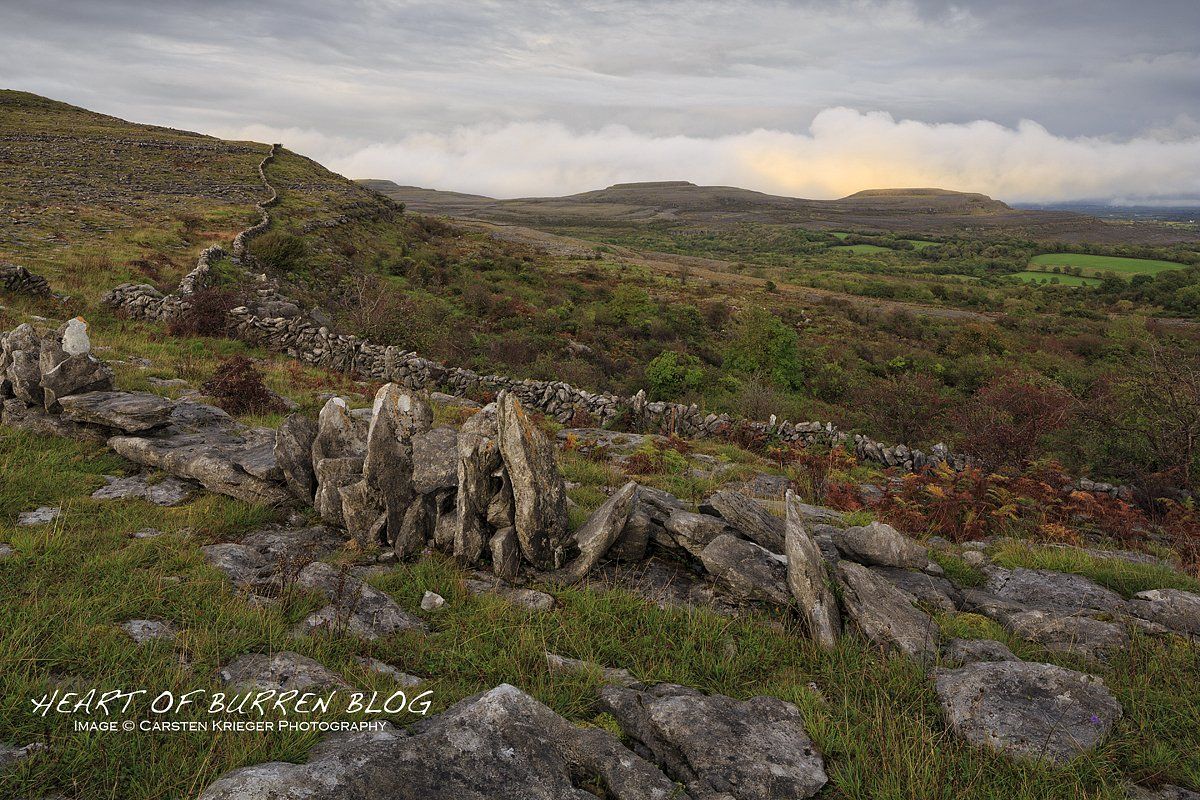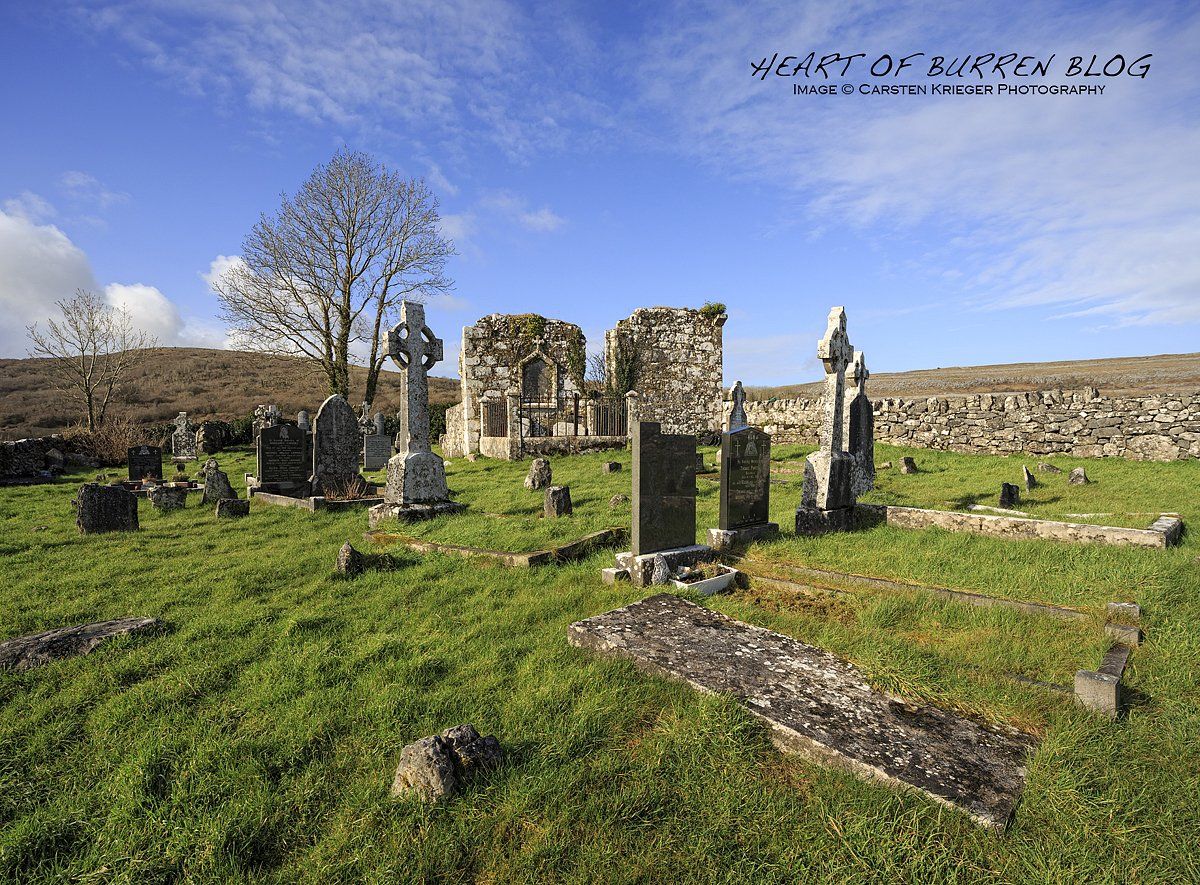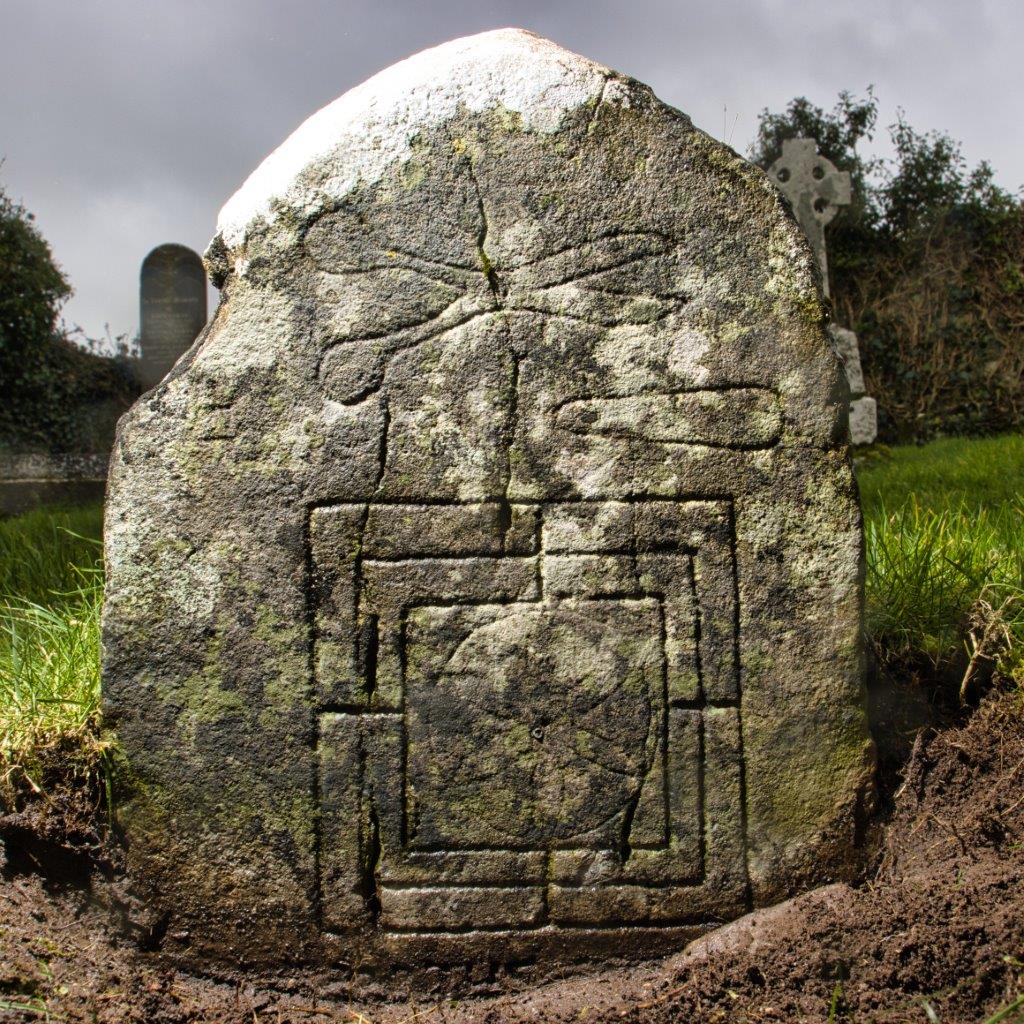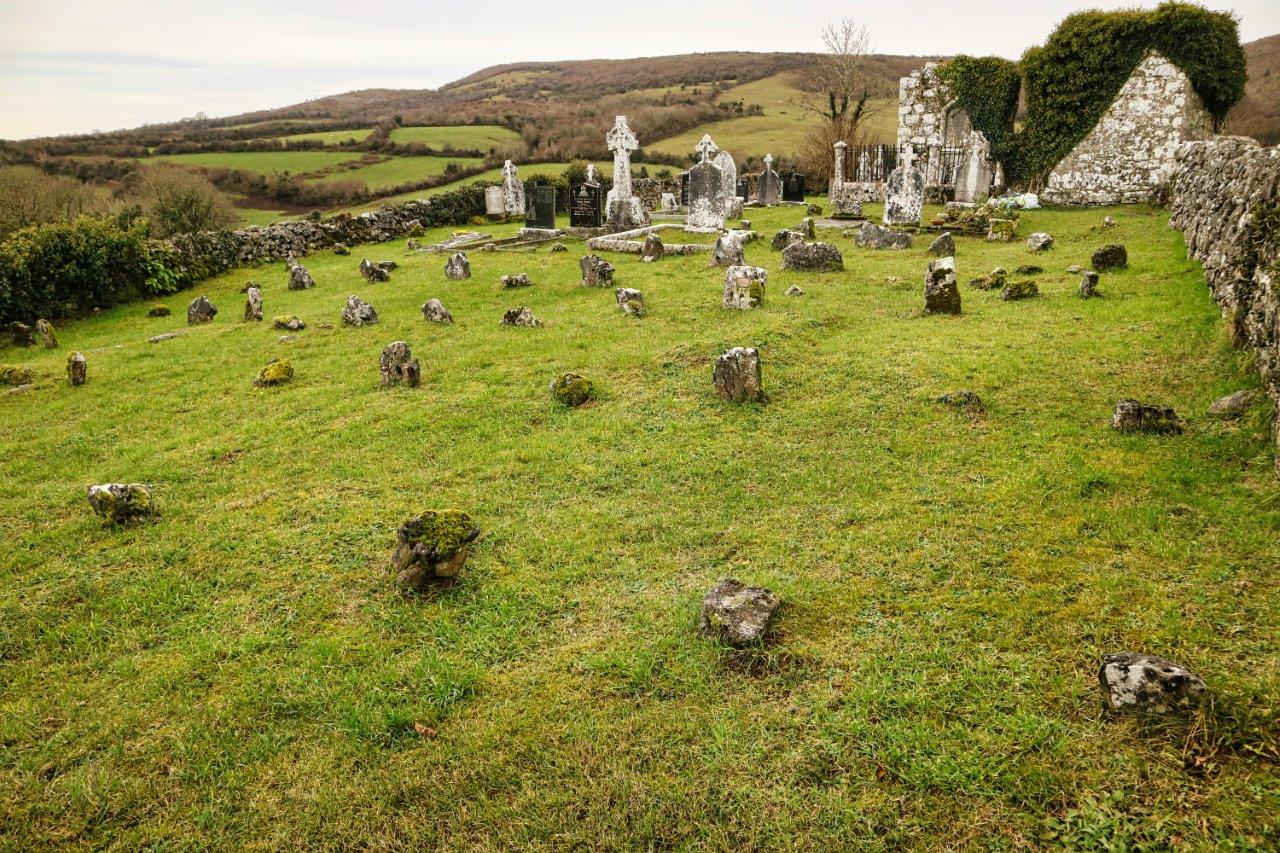In a Burren Graveyard

INTRODUCTION
The placename Glencolmcille comes from the
Irish Gleann Cholm Cille
meaning the valley of St Colmcille.
Glencolmcille is today a sparsely-populated, fertile valley 5.5 kilometres east
of Carran, the only village in the Burren hills. An ancient pass ran through
the valley in the past providing a critical link between the Burren region and the
outside world to the east of it. The importance of this routeway is reflected
in the location of many signature sites along it, including four castles in
Glencolmcille itself along with an ecclesiastical site of Early Medieval (431-1169) origin. According to tradition, the latter was founded by the renowned monk,
Colmcille. The ruin of a church and a graveyard (still in use) stand today on
the former ecclesiastical site. The church is considered to date from the 12th
century.

THE GRAVEYARD
Graveyards
in the Irish country side today are mostly managed by the local municipalities
(county councils). However, in the past, it was the minority religious
group, Church of Ireland (C. of I.), which oversaw them. C. of I. is an
autonomous province of the Anglican community. It was the state religion in Ireland from 1534 to 1871. Though controlled by the C. of
I., graveyards were multi-denominational spaces as Roman Catholics (R.C.s) and others could be buried
there. The R.C. hierarchy only began to open its own dedicated graveyards after Catholic Emancipation
(1823-29).
At Glencolmcille, the funerary "architecture" includes a lavish 18th century mausoleum of a member of the landlord class, Captain Cornelius O'Brien (C. of I.) and also a group of about 20 to 30 small, blank stone markers of the destitute. The graveyard in part reflects Ireland's colonial story
of a powerful, unrepresentative élite (mostly C. of I.) and a vast,
impoverished R.C. majority.

AN
OUTSTANDING HUMBLE HEADSTONE
The markers of the poor R.C.s are concentrated in the
north of the graveyard whereas the more monumental graves are to the south of it. The
markers measure around 50-60 cm in height. They are all of the local limestone
and they invariably have flat faces.
Fellow Burren explorer, Nick Geh, recently discovered one incised headstone amongst all the plain ones. The features depicted on the stone are a scissors, a stone, a hexafoil and either a maze or a labyrinth. The scissors may be an occupational symbol – that of a sheep shearer, a tailor or a dressmaker. The stone is probably the sharpening tool for the scissors. The six-leaved flower within the circle is known as a hexafoil. Hexafoils were assumed, amongst other things, to have apotropaic properties i.e. they could banish/entrap evil spirts. Finally, the three concentric squares may represent either a maze or labyrinth – both of which are ancient symbols, just like the hexafoil.
So much messaging in art form on a small headstone in an old graveyard

ACKNOWLEDGEMENTS
Thanks to Carsten Krieger
and Nick Geh for use of photos. Thanks to Nick for sharing the discovery and his
thoughts on it. Míle buíochas/a thousand thanks



